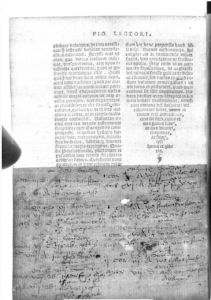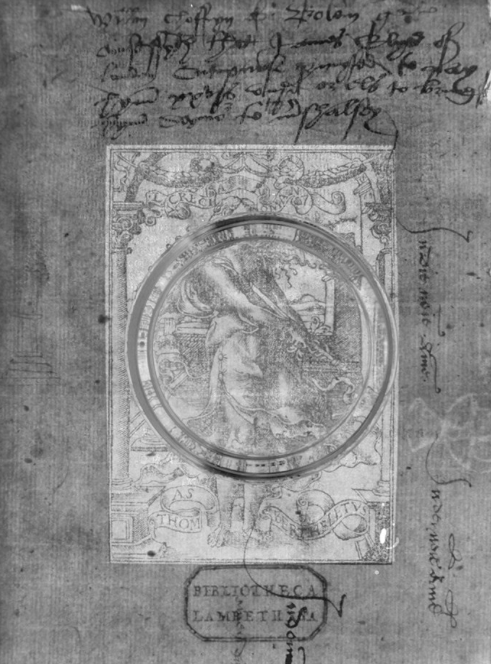
Dr Eyal Poleg is a historian associated with Queen Mary’s University in London. He noticed that some pages of a Latin Bible, printed in 1538, the era of King Henry VIII, were much thicker that the other pages. He surmised that they may have hidden notes that had been written in the margins of the Bible. To test his theory he enlisted some unique help when researching rare books. He asked for the assistance of Dr Graham Davis of the St Mary’s School of Dentistry. Dr Davis is an expert in 3D X-ray technology.
At first, the Lambeth copy first appeared completely ‘clean’. But upon closer inspection I noticed that heavy paper had been pasted over blank parts of the book. The challenge was how to uncover the annotations without damaging the book.
Dr Eyal Poleg
Dr Davis took two images of the thick pages. One image included the printed page and the superimposed notes. The second image was of just the printed page. He then wrote a computer program that would eliminate the printed portion of the page, leaving just the then fully legible notes on the page.
This copy of the Latin Bible was the first to be printed in England. The notes are reportedly copied from Thomas Cromwell’s Great Bible, perhaps sometime between 1529 to 1539. They were later covered over around 1600. This history of the notes in the Bible leads Dr Poleg to surmise that rather than an abrupt event, the English Reformation was likely a gradual process.
This story is from the Church Times. and the Independent.
The images are screenshots of the slideshow in the article.

